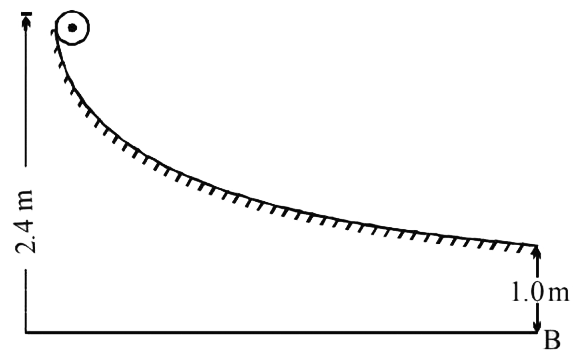The sound of distant horses can br heard by applying the ear to the ground whereas it is inaudible if the ear is held a little distance above the ground. Explain.
We know that loudness is directly proportional to the density of the medium. The density of ground is much higher than that of air. Thus, the sound of distant horses, when conveyed through ground, is louder than when through air. Therefore, by applying ear to the ground, we can hear this sound. But when the ear is a little distance above the ground, the sound travels through air and is hardly audible.
Topper's Solved these Questions
- SOUNDBook:PRADEEPChapter:SOUNDExercise:Long Answer
Explore 6 Videos
- SOUNDBook:PRADEEPChapter:SOUNDExercise:Higher Order Thinking
Explore 9 Videos
- SOUNDBook:PRADEEPChapter:SOUNDExercise:Very Short Answer
Explore 19 Videos
- MOTIONBook:PRADEEPChapter:MOTIONExercise:Mock test
Explore 24 Videos
- WORK AND ENERGYBook:PRADEEPChapter:WORK AND ENERGYExercise:III Quiz Testing
Explore 10 Videos
Similar Questions
The sound of distant horses can be heard by applying the ear to the ground whereas it is inaudible if the ear is held a little distance above the ground. Explain.
View SolutionThe sound of distant horses can be heard by applying the ear to the ground whereas it is inaudible if the ear is held a little distance above the ground. Explain.
View SolutionSound is heard over longer distances on rainy days because
View SolutionAn aeroplane is going towrds east at a speed of 510kmh−1 at a height of2000 m. At a certain instant, the sound o theh plane heard by a ground obserger appears to come from a point vertically above him. Where is the plane at this instant? Speed of sound in air =340ms−1
View SolutionWhy is the tremor of the ground from a distant explosion felt before the sound of the explosion can be heard?
View SolutionThe sound of a thunder is heard 6 s after the lightning flash from a cloud at an angle of 60∘ to the horizontal. Calculate the height of cloud above the ground. The velocity of sound in air is 340 m/s.
View SolutionHumans cannot hear all the sounds produced in their surroundings. The sounds whose frequencies fall in the audible range can only be heard by humans. The lower limit of the audible range for human ears is 20 Hz and the upper limit is a×10b Hz. What are the respective values of a and b?
View SolutionIf we put a cardboard (say20cm×20cm) between a light source and our eyes, we can't see the light. But when we put the same cardboard between a sound source and our ear, we hear the sound almost clearly, Explain.
View Solution(i) A straight railway track is at a distance ‘d’ from you. A distant train approaches you travelling at a speed u(< speed of sound) and crosses you. How does the apparent frequency (f) of the whistle change with time (f0 is the original frequency of the whistle). Draw a rough f vs t graph.
(ii) A bat is tracking a bug. It emits a sound, which reflects off the bug. The bat hears the echo of the sound 0.1 seconds after it originally emitted it. The bat can tell if the insect is to the right or left by comparing when the sound reaches its right ear to when the sound reaches its left ear. Bat’s ears are only 2cm apart. Bats also use the frequency change of the sound echo to determine the flight direction of the bug. While hovering in the air (not moving), the bat emits a sound of 40.0kHz. The frequency of the echo is 40.4kHz. Assume that the speed of sound is 340m/s.
(a) How far away is the bug?
(b) How much time delay is there between the echo reaching the two ears if the bug is directly to the right of the bat?
(c) What is the speed of the bug?
View SolutionA small sphere rolls down without slipping from the top of a track in a vertical plane. The track has an elevated section and a horizontal part, The horizontal part, is 1.0 metre above the ground lenvel and the top of the track is 2.4 meters above the ground. Find the distance on the ground with respect to the point B (which is vertically below the end of the track as shown i fig.) where the sphere lands. During its flight as a projectlie, does the sphere continue to rotate about its centre of mass? Explain.

View Solution